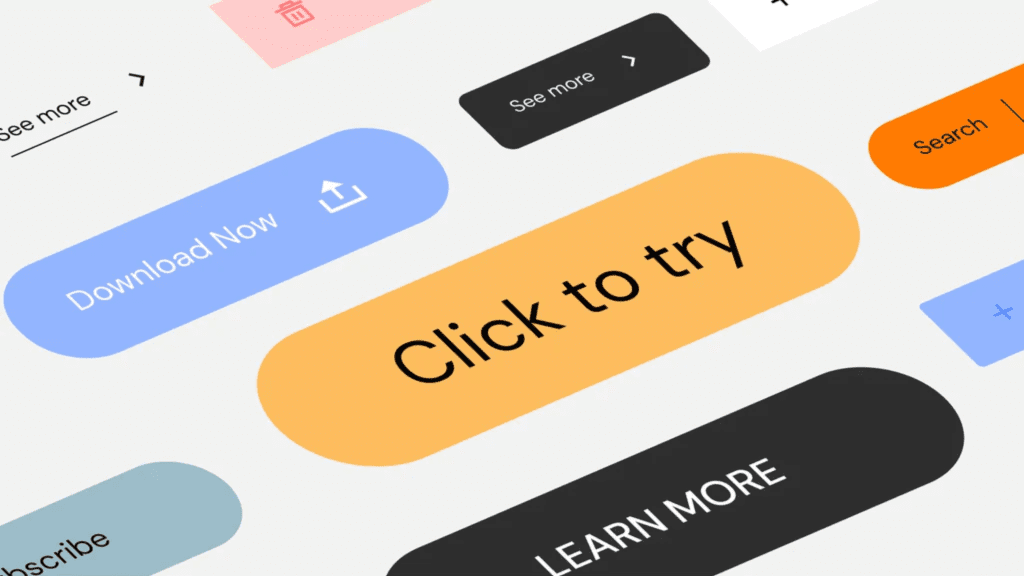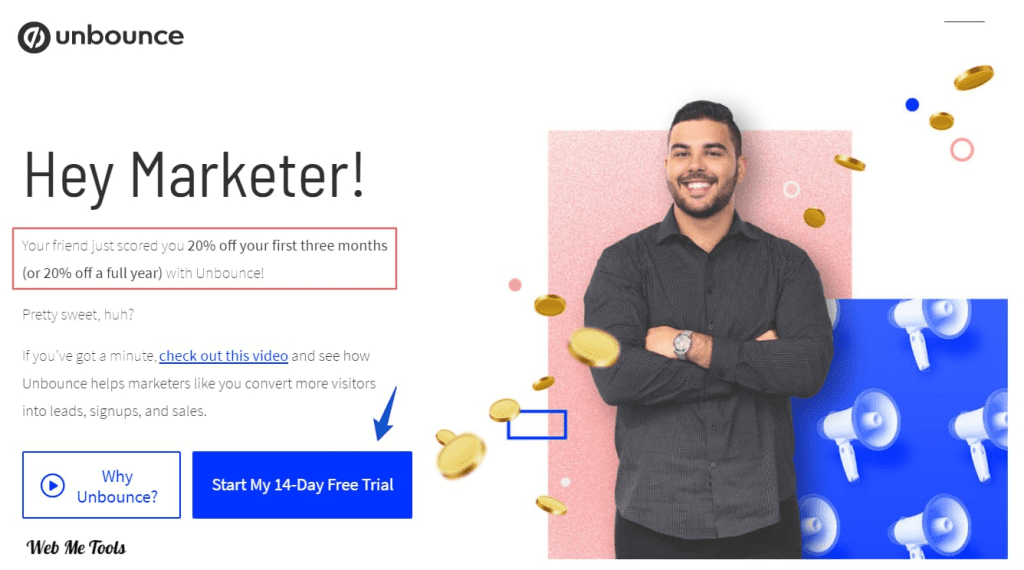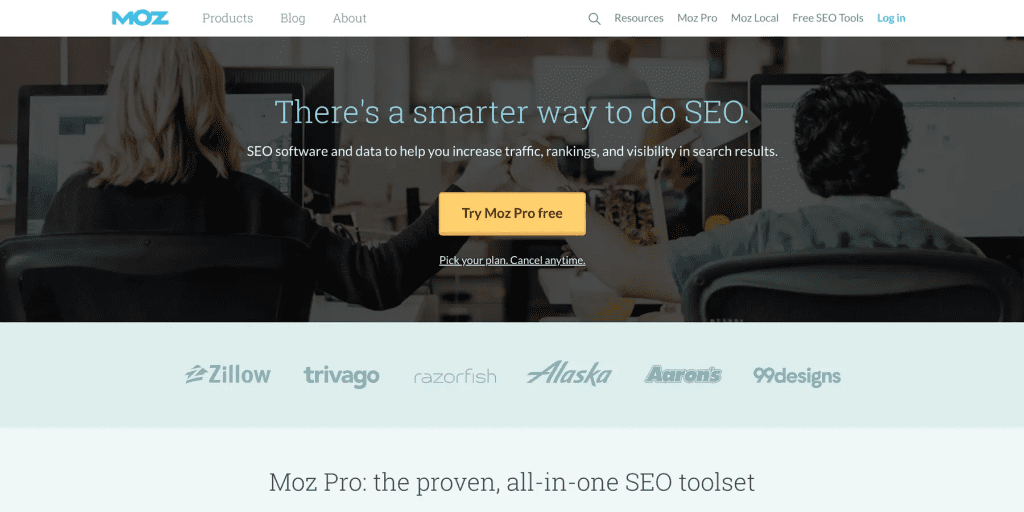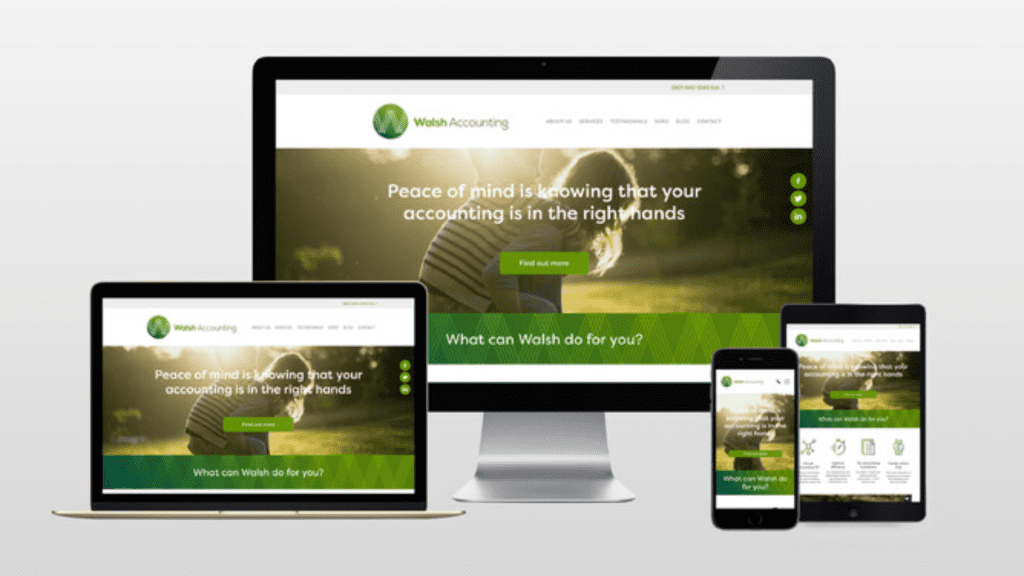Key Takeaways
- Strategic CTAs Propel Conversions: Learn how strategically crafted Call to Actions (CTAs) serve as catalysts, guiding users seamlessly through the conversion funnel and enhancing Conversion Rate Optimization (CRO).
- CTAs as SEO Signals: Uncover the nuanced role of CTAs in signaling search engines. Align CTAs with SEO best practices to communicate relevance, boosting search engine visibility and organic rankings.
- Future-Proofing with CTAs: Explore emerging trends in AI-driven personalization, voice search optimization, and shoppable content. Stay ahead in the digital landscape by mastering the evolving role of CTAs in shaping the future of online success.
In the dynamic landscape of digital marketing, where user engagement and online visibility reign supreme, mastering the art of Conversion Rate Optimization (CRO) and Search Engine Optimization (SEO) is paramount for businesses seeking success in the virtual realm.
At the heart of this strategic endeavor lies a seemingly simple yet profoundly influential element—Call to Actions (CTAs).
In this comprehensive exploration, we delve deep into the intricacies of CTAs and unravel their pivotal role in driving both Conversion Rate Optimization and SEO to new heights.

Unlocking the Power of CTAs: A Prelude to CRO and SEO Synergy
Picture this: a meticulously designed website with visually stunning graphics, compelling content, and seamless navigation.
However, without the guiding force of strategically placed CTAs, this digital masterpiece risks becoming a mere virtual brochure, lacking the ability to convert passive visitors into active participants.
At its essence, a Call to Action serves as a virtual prompt, urging visitors to take a specific action that aligns with the business objectives.
Whether it’s making a purchase, signing up for a newsletter, or downloading a resource, the CTA acts as a virtual handshake, bridging the gap between user engagement and desired outcomes.
It is this very bridge that propels the intricate dance between Conversion Rate Optimization and Search Engine Optimization into motion.
Decoding the DNA of Effective CTAs
Before delving into the symbiotic relationship between CTAs, CROs, and SEO, it is imperative to dissect the components of an effective Call to Action.
From compelling copy that resonates with the target audience to visually captivating designs that command attention, the anatomy of a successful CTA is multi-faceted.
Moreover, the strategic placement of CTAs within the digital landscape plays an important role in steering user behaviour and, consequently, influencing conversion rates.
In the realm of SEO, where search engines are the gatekeepers to online visibility, the role of CTAs transcends mere user engagement. They become integral elements that guide search engine crawlers, signalling the relevance and authority of a webpage.
As we embark on this journey, we will uncover not only the significance of CTAs but also the nuanced techniques that businesses employ to harmonize these elements for maximum impact.
A Confluence of CRO and SEO: The Ripple Effect of CTAs
Conversion Rate Optimization is the science of refining user experience to transform casual browsers into devoted customers.
Simultaneously, SEO serves as the compass guiding businesses through the vast expanse of the digital landscape, ensuring their online presence is not just visible but also authoritative.
At the nexus of these strategies lies the strategic integration of CTAs—a catalyst for synergizing CRO and SEO efforts.
As we navigate through the intricacies of this interconnected triad, we will uncover how CTAs, strategically positioned and meticulously crafted, hold the potential to decrease bounce rates, increase dwell time, and enhance overall user experience.

The journey unfolds with real-world case studies, illuminating the success stories of businesses that have harnessed the power of CTAs to not only optimize conversion rates but also elevate their standing in the competitive realm of search engine rankings.
Join us in this expedition into the realms of CRO, SEO, and the transformative role of CTAs.
As we unravel the layers of this digital tapestry, you’ll gain actionable insights, best practices, and a forward-looking perspective on the future trends shaping the evolution of CTAs in the ever-evolving landscape of online success.
Buckle up for an odyssey where every click, every conversion, and every strategic CTA sets the stage for digital triumph!
Before we venture further, we like to share who we are and our digital experiences.
About AppLabx
From developing a solid marketing plan to creating compelling content, optimizing for search engines, leveraging social media, and utilizing paid advertising, AppLabx offers a comprehensive suite of digital marketing services designed to drive growth and profitability for your business.
AppLabx is well known for helping companies and startups use CTAs in CRO and SEO to drive web traffic to their websites and web apps.
At AppLabx, we understand that no two businesses are alike. That’s why we take a personalized approach to every project, working closely with our clients to understand their unique needs and goals, and developing customized strategies to help them achieve success.
If you need a digital consultation, then send in an inquiry here.
The Role of CTAs in Conversion Rate Optimization (CRO) and SEO
- Understanding CTAs
- The Impact of CTAs on Conversion Rate Optimization (CRO)
- The Intersection of CTAs and SEO
- Best Practices for CTAs in Conversion Rate Optimization and SEO
- Tools and Resources
- Future Trends in CTAs, CROs, and SEO
1. Understanding CTAs
In the vast digital ocean, where user attention is a coveted currency, the role of Call to Actions (CTAs) becomes a navigational beacon, guiding visitors toward desired interactions.
To harness the full potential of CTAs, it is crucial to comprehend their types, components, and the strategic elements that transform them into compelling prompts for user engagement.

Types of CTAs
Button-based CTAs: Pressing for Engagement
Button-based CTAs are tactile prompts strategically placed within a webpage to encourage a specific action. They are often designed with contrasting colours to catch the user’s eye.
According to a study cited by HubSpot, emails with a single CTA increased clicks by 371% and sales by 1617%, underlining the significance of button-based CTAs in conversion-driven design.
Example: Amazon’s “Add to Cart” button
Amazon’s seamless integration of the “Add to Cart” button is a prime example of a button-based CTA.
The vibrant colour and concise text prompt users to take the desired action, contributing significantly to the platform’s impressive conversion rates.

Text-based CTAs: Crafting Persuasive Narratives
Text-based CTAs rely on compelling copy to persuade users to engage. These can be embedded within blog posts, landing pages, or marketing emails.

According to a study cited by HubSpot, personalized CTAs perform 202% better than basic CTAs, emphasizing the importance of tailoring messages to the audience.
Example: Mailchimp’s “Sign Up Free”
Mailchimp employs a straightforward yet persuasive text-based CTA. The use of the word “Free” and the clear call to action motivates users to sign up, aligning with the platform’s user-friendly ethos.

Image-based CTAs: Painting a Thousand Words
Image-based CTAs leverage visuals to convey messages effectively.
These are prevalent in email marketing, social media, and banner advertisements.
A study indicates that articles with images receive 94% more views than those without, underscoring the impact of visual content.
Example: Airbnb’s “Book Your Next Adventure”
Airbnb utilizes visually appealing images coupled with a persuasive message to encourage users to explore their platform. The CTA seamlessly blends with the overall aesthetic, creating an immersive experience.
Components of an Effective CTA
Compelling Copy: Words That Ignite Action
The copy within a CTA is the driving force behind user engagement. Crafted with precision, it should be concise, persuasive, and tailored to the target audience.
According to a report, 80% of readers never make it past the headline, emphasizing the critical role of compelling copy in capturing attention.
Example: Spotify’s “Get Premium”
Spotify’s use of the word “Get” is active and implies immediacy. Combined with the enticing term “Premium,” the CTA appeals to users’ desire for an enhanced experience, driving click-throughs.

Visually Appealing Design: Aesthetics That Capture Attention
The visual design of a CTA is instrumental in attracting users’ attention. A study by Nielsen Norman Group reveals that users often skim-read web pages, focusing on prominent elements. Therefore, an eye-catching design is imperative for CTA effectiveness.
Example: Netflix’s “Join Free for a Month”
Netflix’s CTA features a bold colour palette, a prominent font, and a visually appealing background. The design aligns with the streaming platform’s brand and entices users to explore their services.
Strategic Placement: Guiding User Journey
Where a CTA is placed within a webpage significantly influences user behaviour.
Example: Shopify’s “Start Free Trial”
Shopify strategically places its “Start Free Trial” CTA on its homepage, ensuring it’s one of the first elements users encounter. This positioning capitalizes on users’ initial engagement, driving them toward the conversion funnel.

In the realm of digital marketing, understanding the diverse landscape of CTAs is foundational.
From button-based prompts that demand a click to text-based narratives that tell a compelling story, and image-based invitations that paint a visual journey, each type plays a distinct role in shaping user engagement.
As we delve deeper into the nuances of CTAs, their interplay with Conversion Rate Optimization (CRO) and SEO will come into sharper focus, revealing the intricacies of a well-crafted digital strategy.
2. The Impact of CTAs on Conversion Rate Optimization (CRO)
In the realm of Conversion Rate Optimization (CRO), where every click holds the promise of a potential customer, the role of Call to Actions (CTAs) emerges as a decisive factor in transforming casual browsers into devoted patrons.
This section explores the profound impact of CTAs on CRO, unraveling the mechanisms that make them instrumental in elevating conversion rates to unprecedented heights.
Definition of Conversion Rate Optimization (CRO)
Before delving into the synergy between CTAs and CRO, it’s crucial to understand the essence of Conversion Rate Optimization.
CRO is the systematic process of refining a website or digital asset to boost the percentage of visitors who take the desired action, whether it’s making a purchase, filling out a form, or subscribing to a newsletter.

How CTAs Contribute to Higher Conversion Rates
Encouraging User Action: Nudging Visitors Toward Conversion
CTAs act as digital prompts, urging visitors to take specific actions aligned with business objectives.
The strategic placement of CTAs within the user journey serves as a navigational beacon, steering visitors toward the conversion funnel.
Example: Unbounce’s “Start Your Free Trial” CTA

Unbounce strategically positions its CTA on its homepage, presenting visitors with a clear invitation to start a free trial.
The direct and enticing nature of the CTA encourages immediate user action.
Creating a Sense of Urgency: Fostering Swift Decision-Making
The psychology of urgency is a powerful driver in CRO, and CTAs play a pivotal role in invoking this sentiment.
Example: Agoda’s “Limited Availability” CTA
Agoda employs a sense of urgency in its CTAs by highlighting limited availability, compelling users to make quicker decisions. This tactic not only enhances user engagement but also contributes to increased conversion rates.

Building Trust Through CTAs: Fostering Confidence in User Decisions
Trust is a cornerstone of successful conversions, and CTAs serve as trust-building elements within a digital interface.
Example: PayPal’s “Buy Now” CTA

PayPal’s straightforward “Buy Now” CTA instills confidence in users, assuring them that the transaction process is secure and straightforward. This trust-building element significantly contributes to higher conversion rates.
The Interplay of CTAs and User Experience
Decreasing Bounce Rates: Retaining Visitor Interest
Bounce rates, the percentage of visitors who navigate away from a site after viewing only one page, are a critical metric in CRO. Well-crafted CTAs contribute to lower bounce rates by providing clear pathways for continued engagement.
Example: Neil Patel’s Blog with Strategic CTAs
Neil Patel’s blog is a testament to the effective use of CTAs in decreasing bounce rates. Strategic placement within engaging content ensures that visitors are enticed to explore further, reducing the likelihood of an immediate exit.
Increasing Dwell Time: Enhancing User Engagement
Dwell time, the duration a visitor spends on a webpage before returning to search results is a key metric in CRO and SEO alike.
Compelling CTAs contribute to increased dwell time by guiding users to explore additional pages or take specific actions on the site.
Example: HubSpot’s Hub page with Multiple CTAs
HubSpot strategically incorporates multiple CTAs within its hub pages, encouraging users to explore related content and spend more time on the site. This deliberate design enhances dwell time and contributes to improved conversion rates.
Data-Driven Insights: The CRO Impact of A/B Testing CTAs
A/B Testing for Optimal Performance: Harnessing Data for Success
A/B testing, or split testing, is a crucial aspect of CRO, allowing businesses to optimize CTAs based on real-time user behavior.
Example: Shopify’s A/B Testing Success Story
Shopify’s commitment to A/B testing is evident in its continuous refinement of CTAs.
Through rigorous testing, they identified high-performing elements, contributing to a significant increase in conversion rates over time.
As we navigate the landscape of Conversion Rate Optimization, it becomes evident that CTAs are not mere digital signposts but potent catalysts for user engagement and conversion.
From encouraging immediate action and fostering urgency to building trust and enhancing overall user experience, CTAs play a multifaceted role in the intricate dance of CRO.
In the subsequent sections, we’ll embark on a parallel journey, exploring the intersection of CTAs and Search Engine Optimization (SEO), unravelling the holistic impact of these digital prompts on the broader spectrum of online success.
3. The Intersection of CTAs and SEO
In the intricate dance of digital marketing, where the realms of Call to Actions (CTAs) and Search Engine Optimization (SEO) converge, a synergistic strategy emerges, shaping the online success of businesses.
This section unravels the interplay between CTAs and SEO, exploring how these digital elements coalesce to not only enhance user experience but also propel websites to the forefront of search engine rankings.
Defining the Role of CTAs in SEO
Beyond User Engagement: CTAs as Signals for Search Engines
While CTAs are primarily viewed as prompts for user engagement, they also serve as signals for search engines.
Compelling CTAs can entice users to click on your search results, increasing your CTRs (click-through rates). Higher CTRs send positive signals to search engines, indicating that your website is relevant and valuable to users.
Example: Moz’s “Try Moz Pro Free” CTA
Moz strategically integrates a prominent CTA, “Try Moz Pro Free,” within its content pages. This not only encourages user interaction but also sends a clear signal to search engines about the page’s purpose and value.

Decreasing Bounce Rates: A Boost for SEO Ranking
High bounce rates can negatively impact SEO rankings, signaling to search engines that a webpage may not be providing valuable content. Well-crafted CTAs, strategically placed to guide users to explore further, contribute to lower bounce rates and can positively influence SEO.
Example: Ahrefs’ Blog with CTAs in Content
Ahrefs strategically places CTAs within its blog content, encouraging users to delve deeper into related topics. This intentional design helps in reducing bounce rates and enhancing the overall user experience, aligning with SEO best practices.
The Impact of CTAs on User Experience and SEO Metrics
Increasing Dwell Time: An SEO Metric of Significance
Pages with engaging CTAs that lead to prolonged user engagement contribute positively to dwell time, signaling to search engines that the content is relevant and valuable.
Example: HubSpot’s In-Depth Guides with CTAs
HubSpot’s in-depth guides strategically incorporate CTAs, encouraging users to explore additional resources.
This deliberate design not only enhances user experience but also contributes to increased dwell time, a factor considered by search engines in evaluating content quality.
Strategic Keyword Alignment: CTAs as Anchors for SEO Strategy
The alignment of CTAs with relevant keywords is a strategic approach that enhances SEO. By incorporating key phrases within CTAs, businesses can signal to search engines the topical relevance of their content, contributing to improved rankings for targeted keywords.
Example: SEMrush’s “Get a Free Trial” CTA
SEMrush aligns its CTA, “Get a Free Trial,” with its focus on SEO tools and solutions. This not only resonates with users but also reinforces the topical relevance of the page for search engines.

The Technical Side of CTAs and SEO Integration
Mobile Responsiveness: A Crucial Aspect for SEO Success
Given the increasing prevalence of mobile users, Google considers mobile-friendliness as a ranking factor. CTAs that are mobile-responsive contribute to a positive user experience and align with SEO best practices.
Example: Mobile-Optimized CTAs on Shopify’s Website
Shopify ensures that its CTAs are optimized for mobile users, providing a seamless experience across devices. This commitment to mobile responsiveness aligns with Google’s mobile-first indexing and positively impacts SEO.

Page Loading Speed: CTAs for Swift User Interaction
Page loading speed is another critical factor in SEO rankings. CTAs that facilitate swift user interaction contribute to a positive user experience and align with Google’s emphasis on fast-loading pages.
Example: Amazon’s Instantly Loading “Buy Now” CTA
Amazon’s “Buy Now” CTA is designed for instant loading, ensuring that users can make swift purchase decisions. This aligns with both CRO principles and SEO best practices by enhancing user experience and page loading speed.

4. Best Practices for CTAs in Conversion Rate Optimization and SEO
Crafting compelling Call to Actions (CTAs) is an art that goes beyond mere design; it’s a strategic science that influences both Conversion Rate Optimization (CRO) and Search Engine Optimization (SEO).
In this exhaustive exploration, we delve into the best practices that propel CTAs to the forefront of a winning digital strategy, drawing insights from industry benchmarks and successful implementations.
Crafting Compelling and Relevant CTAs
Clarity and Conciseness: The Power of Direct Communication
A strong CTA should be clear and straightforward, leaving no room for interpretation.
Example: Slack’s “Get Started for Free” CTA communicates the value proposition concisely, enhancing user understanding and encouraging prompt action.
Alignment with User Intent: Meeting User Expectations
By aligning the CTA with the user’s intent, businesses can create a more personalized user experience that increases engagement.
Example: Google’s search page features a focused “Google Search” CTA, perfectly aligned with the user’s intent of initiating a search.

Mobile Responsiveness and CTAs
Responsive Design: Ensuring a Seamless Mobile Experience
A responsive design ensures that your website adapts to different screen sizes and resolutions, making it easy for users to navigate and consume content on any device.
Example: Shopify ensures its CTAs are optimized for mobile users, providing a seamless experience across devices.
Thumb-Friendly CTAs: Enhancing Mobile Usability
Mobile-friendly CTA buttons should be large enough to be easily tapable with a finger, and they should be placed in a prominent location on the page where they are easily visible.
Example: X’s (Twitter) “Tweet” CTA is strategically positioned and sized for easy thumb interaction on mobile devices.
Aligning CTAs with Keyword Strategy for SEO
Keyword-Infused CTAs: Enhancing Relevance for Search Engines
Incorporating key phrases within CTAs contributes to improved rankings for targeted keywords.
Example: SEMrush’s “Get Keyword Magic Tool” CTA aligns with its focus on SEO tools, reinforcing the relevance of the page for search engines.
Schema Markup for CTAs: Enhancing Search Engine Visibility
Implementing schema markup for CTAs can provide additional context to search engines, potentially impacting click-through rates.
Example: Local businesses often use schema markup for CTAs like “Call Now” or “Get Directions” to enhance their visibility in local search results.
5. Tools and Resources
In the dynamic and ever-evolving world of digital marketing, having the right tools and resources at your disposal is paramount.
This comprehensive exploration delves into a myriad of tools and resources spanning various aspects of digital marketing, shedding light on their functionalities, benefits, and the impact they can have on achieving digital excellence.
Keyword Research Tools: Unveiling Search Intent Insights
Google Keyword Planner: Unlocking Search Volume Potential
- Functionality: Google Keyword Planner is a versatile tool for uncovering keywords relevant to your business. It provides insights into search volume, and competition, and helps in crafting targeted content.
- Benefits: Leveraging this tool ensures that your content aligns with user search intent, enhancing SEO performance.
SEMrush: Comprehensive Keyword Analytics
- Functionality: SEMrush goes beyond keyword research, offering in-depth analytics on organic search, paid search, and display advertising. It helps in competitor analysis and provides actionable insights.
- Benefits: With SEMrush, you can identify high-performing keywords, track your competitors, and refine your SEO and PPC strategies.
Content Creation and Optimization Tools: Crafting Compelling Narratives
Grammarly: Elevating Content Quality
- Functionality: Grammarly is an AI-powered writing assistant that enhances the quality of written content. It corrects grammar, and spelling, and provides style suggestions.
- Benefits: Using Grammarly ensures error-free and polished content, contributing to a positive user experience and higher engagement.
Yoast SEO: Fine-Tuning Content for SEO
- Functionality: Yoast SEO is a WordPress plugin that assists in optimizing content for search engines. It provides real-time suggestions for improving on-page SEO.
- Benefits: By following Yoast’s recommendations, you can enhance the SEO-friendliness of your content and improve search engine rankings.
Analytics and Reporting Tools: Unveiling Performance Insights
Google Analytics: Tracking Website Performance
- Functionality: Google Analytics is a robust web analytics tool that provides comprehensive insights into website traffic, user behavior, and conversion metrics.
- Benefits: Understanding user interactions helps in refining digital strategies, optimizing content, and improving overall website performance.
HubSpot Analytics: Aligning Marketing Efforts
- Functionality: HubSpot Analytics offers a centralized view of marketing, sales, and service performance. It includes features for tracking website analytics, lead generation, and customer engagement.
- Benefits: HubSpot Analytics enables data-driven decision-making, aligning marketing efforts with business goals.
Social Media Management Tools: Orchestrating Online Presence
Hootsuite: Streamlining Social Media Workflow
- Functionality: Hootsuite is a social media management platform that allows scheduling posts, monitoring social conversations, and analyzing performance across various social networks.
- Benefits: Streamlining social media tasks with Hootsuite saves time, ensures consistency, and enhances engagement.
Buffer: Simplifying Social Media Scheduling
- Functionality: Buffer is a social media scheduling tool that simplifies the process of planning and publishing content across different platforms.
- Benefits: By scheduling posts at optimal times, Buffer helps in maximizing reach and engagement.
SEO Monitoring and Rank Tracking Tools: Staying Ahead in Search Rankings
Ahrefs: Comprehensive SEO Analysis
- Functionality: Ahrefs is an all-encompassing SEO tool offering features like keyword research, backlink analysis, and competitor tracking.
- Benefits: Ahrefs provides actionable insights to improve your website’s SEO, monitor rankings, and stay ahead in the competitive landscape.
Moz: Monitoring Search Engine Performance
- Functionality: Moz offers tools for keyword research, link building, and site audits. It provides valuable data for optimizing your site’s performance on search engines.
- Benefits: Moz’s insights help in identifying SEO opportunities, fixing issues, and enhancing overall website visibility.
Email Marketing Tools: Nurturing Customer Relationships
Mailchimp: Streamlined Email Campaigns
- Functionality: Mailchimp is a popular email marketing platform that facilitates the creation and automation of email campaigns.
- Benefits: Mailchimp’s user-friendly interface and automation features simplify the process of nurturing leads and engaging customers.
Constant Contact: Engaging Email Marketing Solutions
- Functionality: Constant Contact provides email marketing tools, including customizable templates, contact management, and analytics.
- Benefits: Engage your audience with visually appealing emails, track performance, and optimize your email marketing strategy.
6. Future Trends in CTAs, CRO, and SEO
In the fast-paced realm of digital marketing, the landscape is ever-evolving.
As we look ahead, the future trends in Call to Actions (CTAs), Conversion Rate Optimization (CRO), and Search Engine Optimization (SEO) promise to reshape the way businesses engage with audiences and compete for online visibility.
This in-depth exploration unveils the emerging trends backed by data-driven insights and real-world examples.
AI-Powered Personalization: Elevating User Engagement
Personalized CTAs Through AI: A Paradigm Shift in Engagement
According to a report, 91% of consumers are more likely to shop with brands that provide personalized offers and recommendations.
Example: Netflix’s recommendation engine is a prime example of AI-driven personalization. By presenting tailored CTAs, Netflix keeps users engaged and encourages continuous interaction.

Dynamic CTAs Based on User Behavior: Predictive Analytics in Action
Example: Amazon’s use of dynamic CTAs, recommending products based on user browsing and purchase history, showcases the power of predictive analytics in shaping user journeys.
Voice Search Optimization: A New Frontier for SEO
Rise of Voice Searches: Shaping SEO Strategies
The global voice recognition market is expected to grow from a humble ten billion U.S. dollars in 2020 and 2021 to nearly 50 billion U.S. dollars in 2029, a CAGR growth of 23.7 percent.
Example: Google’s integration of voice search capabilities and the growing popularity of virtual assistants like Amazon’s Alexa signal a shift towards voice-first interactions.
Conversational Keywords and Long-Tail Phrases: Adapting to Voice Queries
SEMrush’s study highlights the importance of optimizing for conversational keywords and long-tail phrases in voice search SEO strategies.
Example: The use of natural language in CTAs and content, catering to voice search patterns, is evident in companies like Starbucks, optimizing for queries like “Where is the nearest Starbucks?”.
Video CTAs and Shoppable Content: Engaging Audiences Visually
The Dominance of Video Content: A Visual Call to Action
Data on global digital video viewership revealed that in 2020 there were over three billion internet users of any age who watched streaming or downloaded video via any device at least once per month.
This figure is projected to increase annually and reach nearly 3.5 billion by the year 2023.
Example: YouTube’s interactive video ads, allowing users to engage with CTAs within the video itself, showcase the potential of video content for driving actions.
Shoppable Posts and Direct CTAs in Social Media: A Seamless Shopping Experience
Forecasts suggest that the value of social commerce sales will reach around 8.5 trillion U.S. dollars by 2030.
Example: Instagram’s shoppable posts and direct CTAs enable users to make purchases directly through the platform, reducing friction in the customer journey.
Page Experience Signals and Core Web Vitals: SEO Beyond Keywords
Google’s Emphasis on Page Experience: A Ranking Factor Shift
Google’s announcement that Core Web Vitals will become a ranking factor highlights the significance of page experience, as cited by Bounteous.
Example: Websites focusing on elements like fast loading times, mobile responsiveness, and a seamless user experience are likely to benefit from Google’s algorithm updates.
Optimizing CTAs for Page Speed: A Crucial SEO Component
Google reports that as page load time increases from 1 to 10 seconds, the probability of a mobile site visitor bouncing increases by 123%.
Example: HubSpot’s strategically placed and optimized CTAs contribute to a fast and user-friendly experience, aligning with Google’s page speed recommendations.
Ethical Design and Inclusive CTAs: A User-Centric Approach
User Privacy and Ethical Design: A Growing Concern
A survey by the Pew Research Center indicates that 79% of Americans are concerned about the way their data is being used by companies.
Example: Apple’s emphasis on user privacy, including app tracking transparency, reflects a growing trend towards ethical design.
Inclusive CTAs and Accessibility: Broadening Digital Reach
Globally, at least 2.2 billion people have near or distant vision impairment.
Example: Microsoft’s Inclusive Design Toolkit promotes the creation of CTAs that are accessible to users with diverse abilities, expanding the reach of digital experiences.
Conclusion
In the intricate symphony of digital marketing, the crescendo of success is often dictated by the harmonious integration of Call to Actions (CTAs) into Conversion Rate Optimization (CRO) and Search Engine Optimization (SEO) strategies.
As we traverse the vast landscape of this dynamic interplay, it becomes abundantly clear that CTAs are not mere prompts for user interaction; they are the linchpin that unites user engagement, conversion optimization, and search engine visibility.
CTAs as Catalysts for Conversion Optimization
In the realm of Conversion Rate Optimization (CRO), CTAs emerge as catalysts that transform casual visitors into active participants.
The strategic placement, compelling copy, and irresistible allure of a well-crafted CTA are akin to the maestro’s baton, directing users seamlessly through the digital journey.
The data-driven insights from A/B testing underscore the importance of continuous refinement, ensuring that CTAs evolve to resonate with the ever-changing preferences and behaviours of the audience.
The SEO Symphony: CTAs as Signals for Search Engines
As we transition into the realm of Search Engine Optimization (SEO), CTAs take on an additional role as signals for search engines.
The meticulous alignment of CTAs with relevant keywords becomes a strategic overture, conveying to search algorithms the topical relevance and authority of a webpage.
The nuanced dance between CTAs and SEO metrics, from dwell time to mobile responsiveness, amplifies the resonance of a website in the digital echelons.
Dwell Time, Bounce Rates, and Beyond: Metrics Shaped by CTAs
Dwell time, the silent maestro of user experience, finds its crescendo in the strategic interplay of CTAs. The longer users linger, propelled by the appeal of well-designed CTAs, the more favourable search engines regard the website.
On the flip side, the symphony of high bounce rates is tempered by the guiding influence of CTAs, ensuring that users traverse deeper into the digital landscape rather than departing hastily.
The Future Symphony: CTAs and the Evolution of Digital Marketing
As we peer into the future, the role of CTAs in the digital orchestra is poised for even greater significance. AI-powered personalization, voice search optimization, and the dynamic landscape of video content promise to shape the melody of CTAs in ways yet unexplored.
In this ever-evolving symphony, staying attuned to emerging trends and adapting CTAs to meet the demands of a dynamic audience will be the key to sustained digital success.
Crafting a Harmonious Overture: The Final Note
In conclusion, the role of CTAs in Conversion Rate Optimization and SEO transcends the realms of mere user prompts. CTAs are the architects of engagement, the signals for search engines, and the conductors of user experience metrics.
In orchestrating the digital symphony, businesses must embrace the nuanced art of CTA crafting, A/B testing refinement, and strategic alignment with SEO best practices.
As the digital landscape continues to evolve, the businesses that master the orchestration of CTAs within the grand composition of CRO and SEO will find themselves not merely participants but virtuosos in the ever-expanding realm of online success.
In this digital symphony, the melody of CTAs will continue to resonate, guiding users, influencing conversions, and conducting businesses toward the crescendo of digital excellence.
If you are looking for a top-class digital marketer, then book a free consultation slot here.
If you find this article useful, why not share it with your friends and business partners, and also leave a nice comment below?
We, at the AppLabx Research Team, strive to bring the latest and most meaningful data, guides, and statistics to your doorstep.
To get access to top-quality guides, click over to the AppLabx Blog.
People also ask
Why is CRO important for SEO?
Conversion Rate Optimization (CRO) is crucial for SEO as it enhances user experience, reduces bounce rates, and increases dwell time. Google rewards sites that satisfy user intent, and improved CRO signals relevancy, boosting organic rankings. A seamless conversion journey aligns with SEO goals, driving long-term success.
What is the role of conversion rate optimization?
Conversion Rate Optimization (CRO) fine-tunes user experiences to increase the percentage of website visitors taking desired actions. It maximizes the value of existing traffic, enhances user satisfaction, and ultimately boosts conversions, contributing to business growth and success.
What is conversion rate optimization CRO in digital marketing?
Conversion Rate Optimization (CRO) in digital marketing is the systematic process of enhancing a website or landing page to maximize the likelihood of visitors completing desired actions. It focuses on improving user experience, increasing conversions, and ultimately achieving business objectives.
































